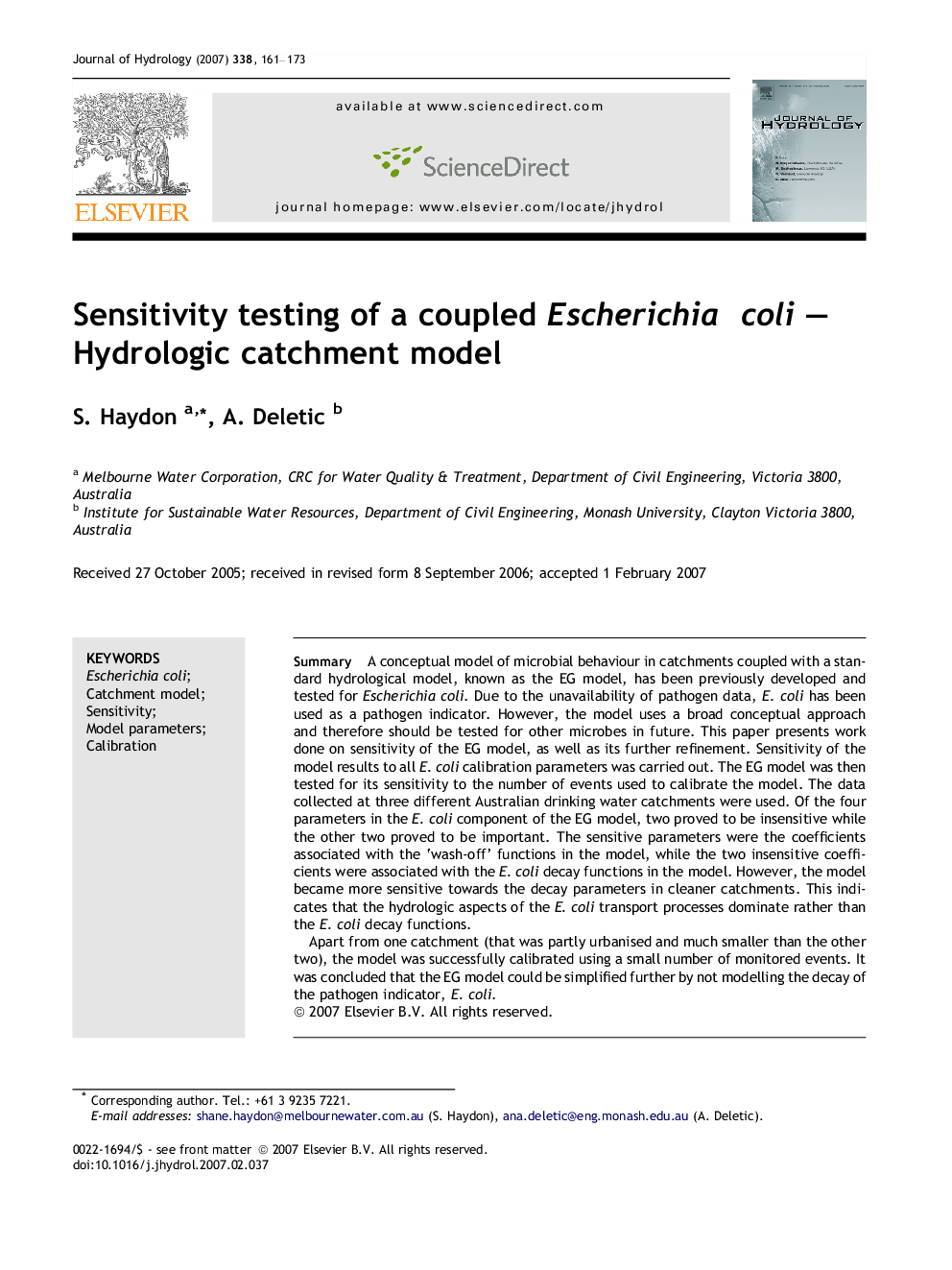| Article ID | Journal | Published Year | Pages | File Type |
|---|---|---|---|---|
| 4579984 | Journal of Hydrology | 2007 | 13 Pages |
SummaryA conceptual model of microbial behaviour in catchments coupled with a standard hydrological model, known as the EG model, has been previously developed and tested for Escherichia coli. Due to the unavailability of pathogen data, E. coli has been used as a pathogen indicator. However, the model uses a broad conceptual approach and therefore should be tested for other microbes in future. This paper presents work done on sensitivity of the EG model, as well as its further refinement. Sensitivity of the model results to all E. coli calibration parameters was carried out. The EG model was then tested for its sensitivity to the number of events used to calibrate the model. The data collected at three different Australian drinking water catchments were used. Of the four parameters in the E. coli component of the EG model, two proved to be insensitive while the other two proved to be important. The sensitive parameters were the coefficients associated with the ‘wash-off’ functions in the model, while the two insensitive coefficients were associated with the E. coli decay functions in the model. However, the model became more sensitive towards the decay parameters in cleaner catchments. This indicates that the hydrologic aspects of the E. coli transport processes dominate rather than the E. coli decay functions.Apart from one catchment (that was partly urbanised and much smaller than the other two), the model was successfully calibrated using a small number of monitored events. It was concluded that the EG model could be simplified further by not modelling the decay of the pathogen indicator, E. coli.
